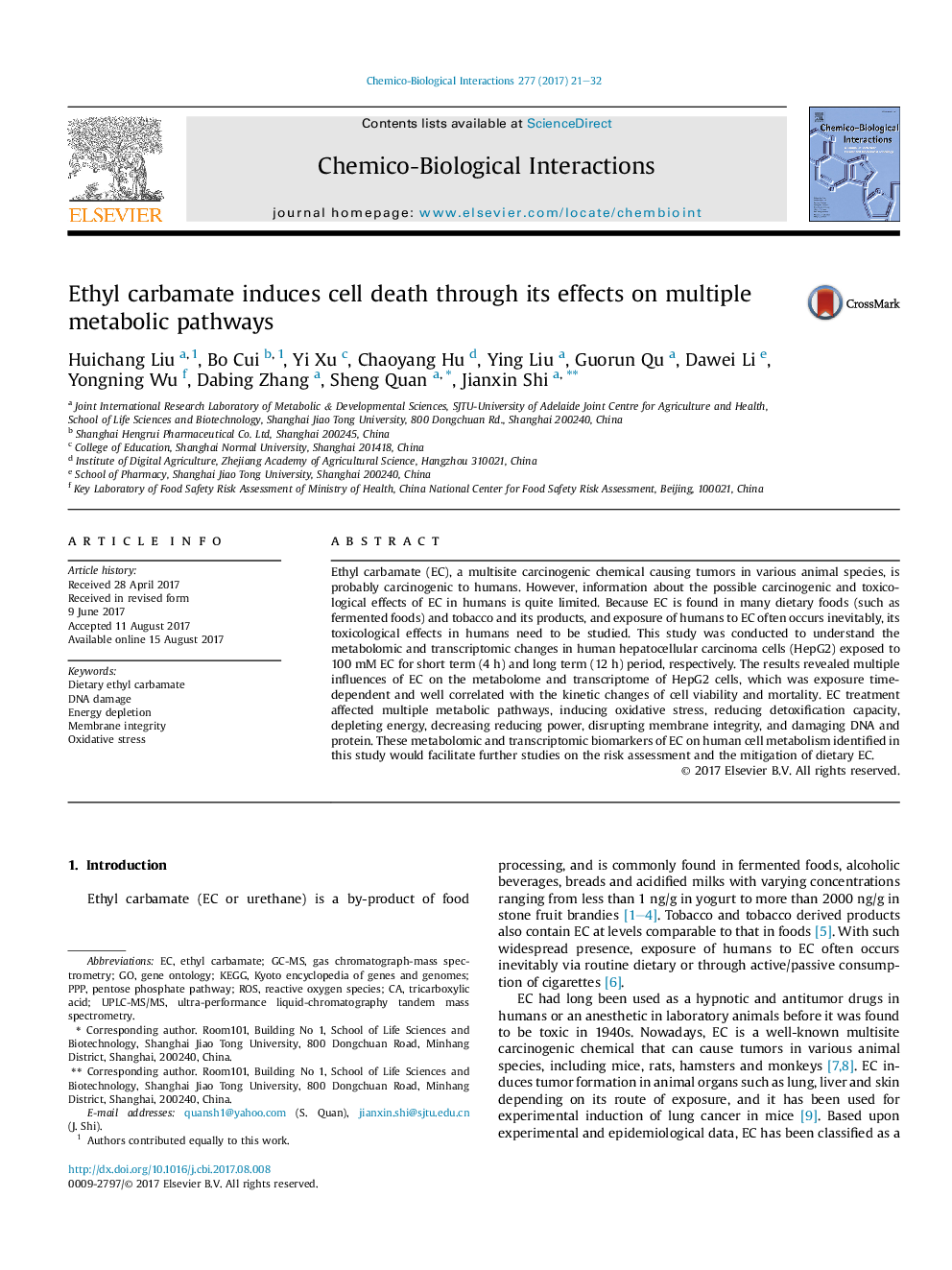| Article ID | Journal | Published Year | Pages | File Type |
|---|---|---|---|---|
| 5559356 | Chemico-Biological Interactions | 2017 | 12 Pages |
â¢Ethyl carbamate has profound influences on HepG2 metabolome and transcriptome.â¢Metabolomic and transcriptomic responses of HepG2 are exposure time dependent.â¢Such molecular changes corresponds well with cell's mortality kinetics.
Ethyl carbamate (EC), a multisite carcinogenic chemical causing tumors in various animal species, is probably carcinogenic to humans. However, information about the possible carcinogenic and toxicological effects of EC in humans is quite limited. Because EC is found in many dietary foods (such as fermented foods) and tobacco and its products, and exposure of humans to EC often occurs inevitably, its toxicological effects in humans need to be studied. This study was conducted to understand the metabolomic and transcriptomic changes in human hepatocellular carcinoma cells (HepG2) exposed to 100Â mMÂ EC for short term (4Â h) and long term (12Â h) period, respectively. The results revealed multiple influences of EC on the metabolome and transcriptome of HepG2 cells, which was exposure time-dependent and well correlated with the kinetic changes of cell viability and mortality. EC treatment affected multiple metabolic pathways, inducing oxidative stress, reducing detoxification capacity, depleting energy, decreasing reducing power, disrupting membrane integrity, and damaging DNA and protein. These metabolomic and transcriptomic biomarkers of EC on human cell metabolism identified in this study would facilitate further studies on the risk assessment and the mitigation of dietary EC.
Graphical abstractDownload high-res image (115KB)Download full-size image
